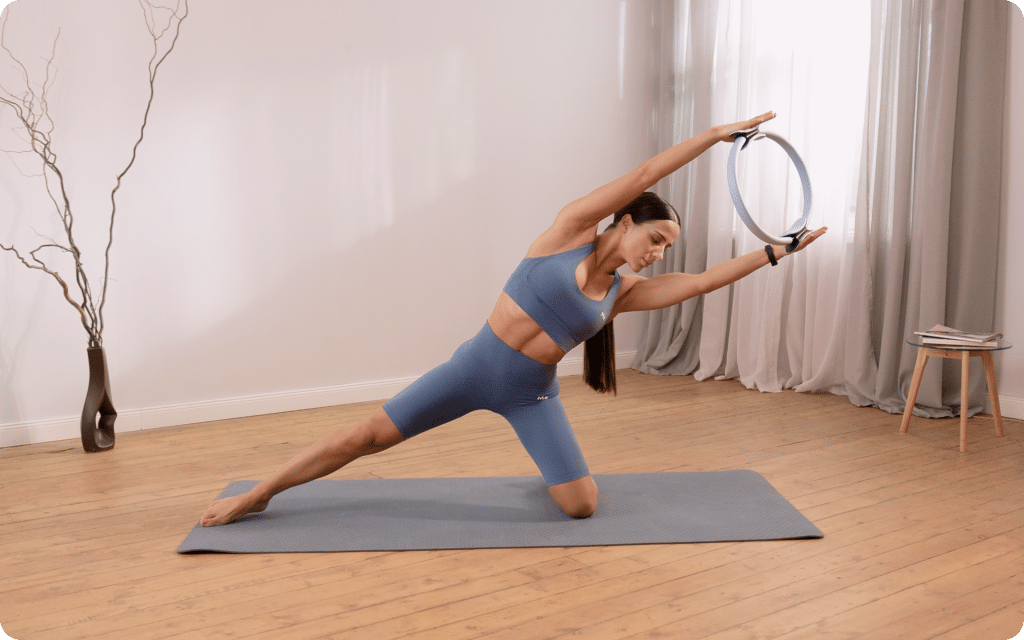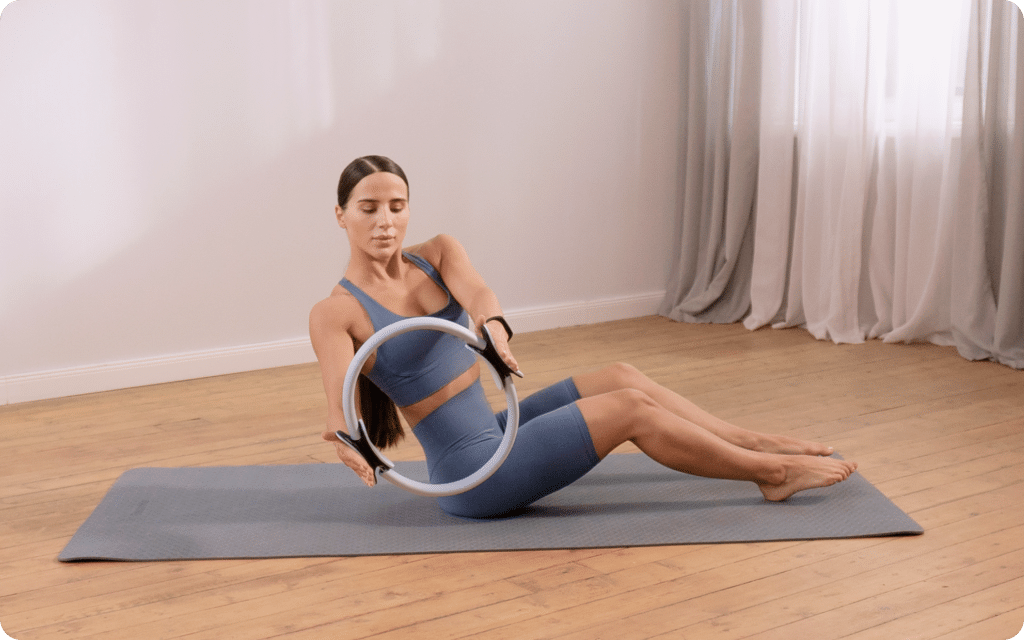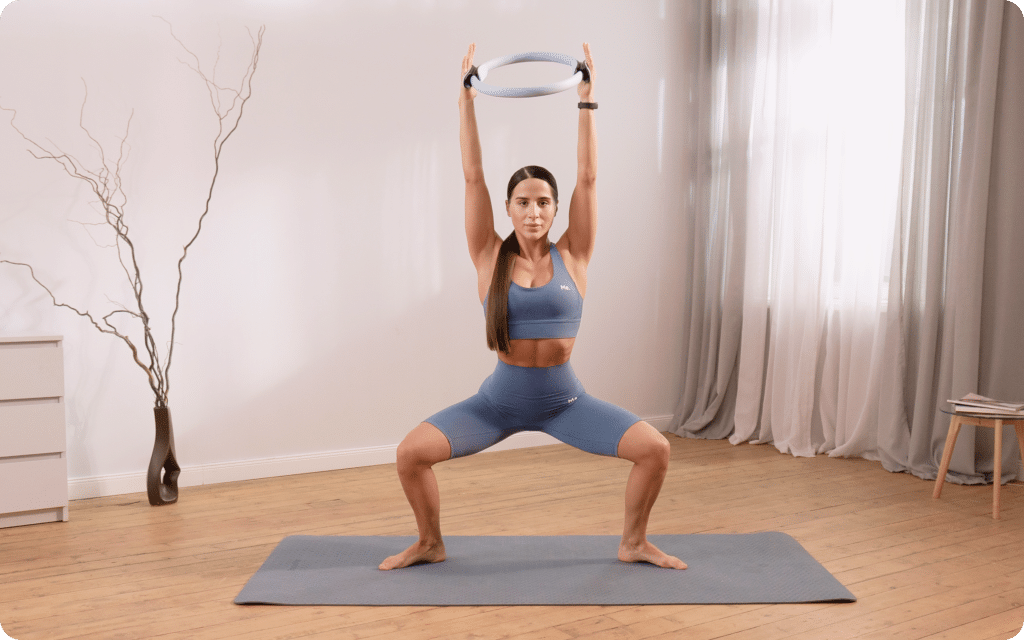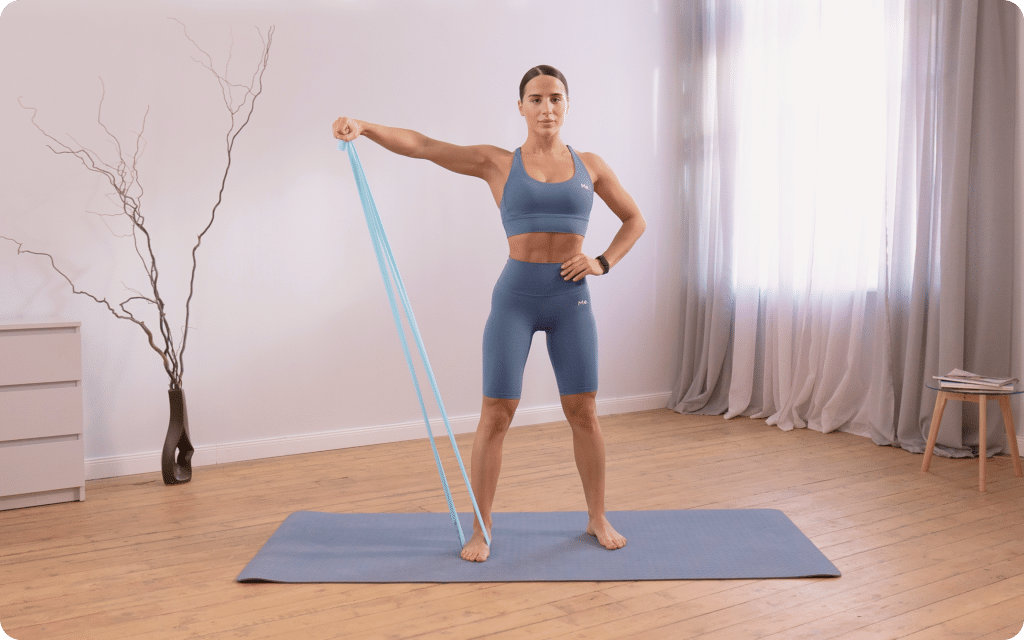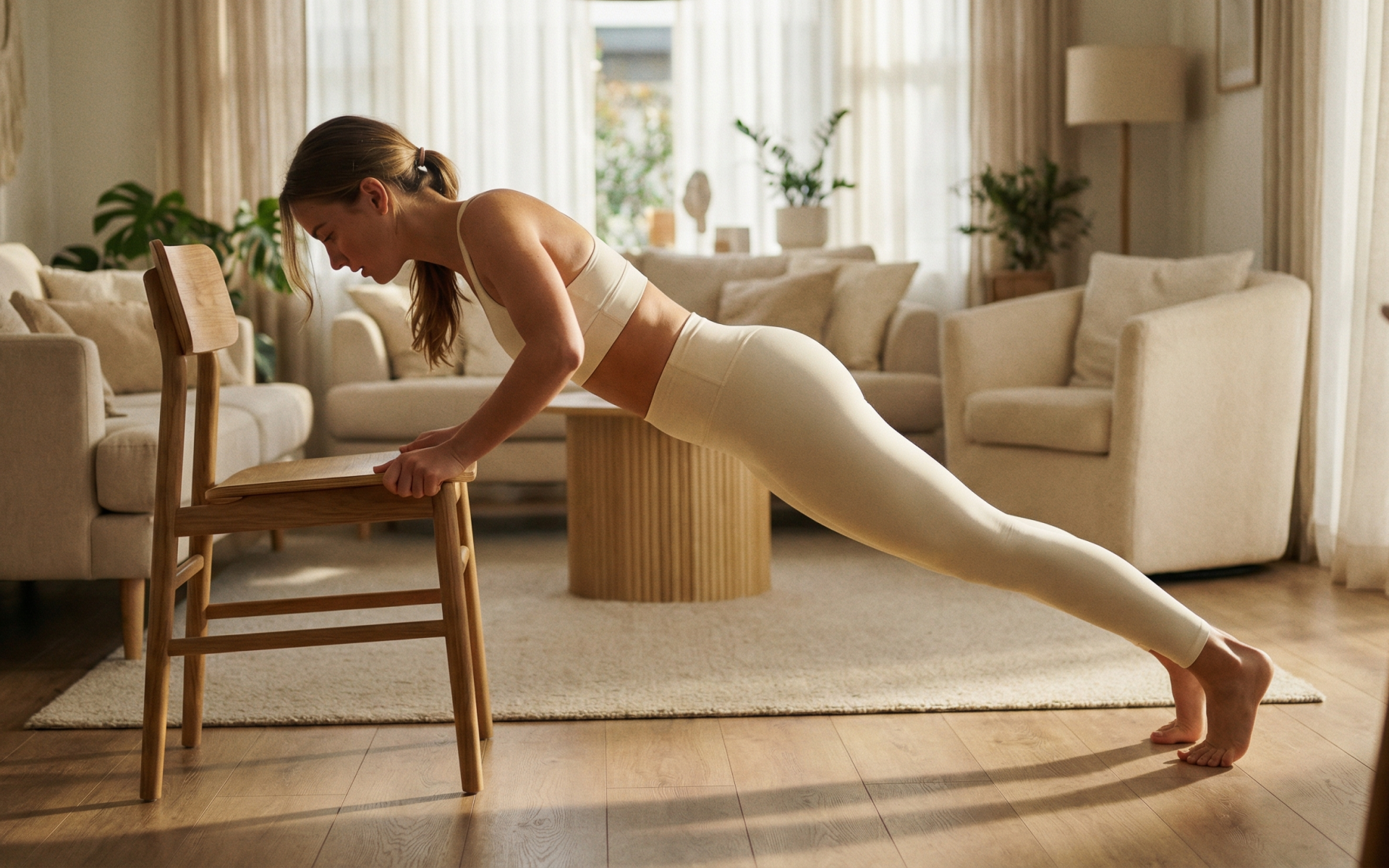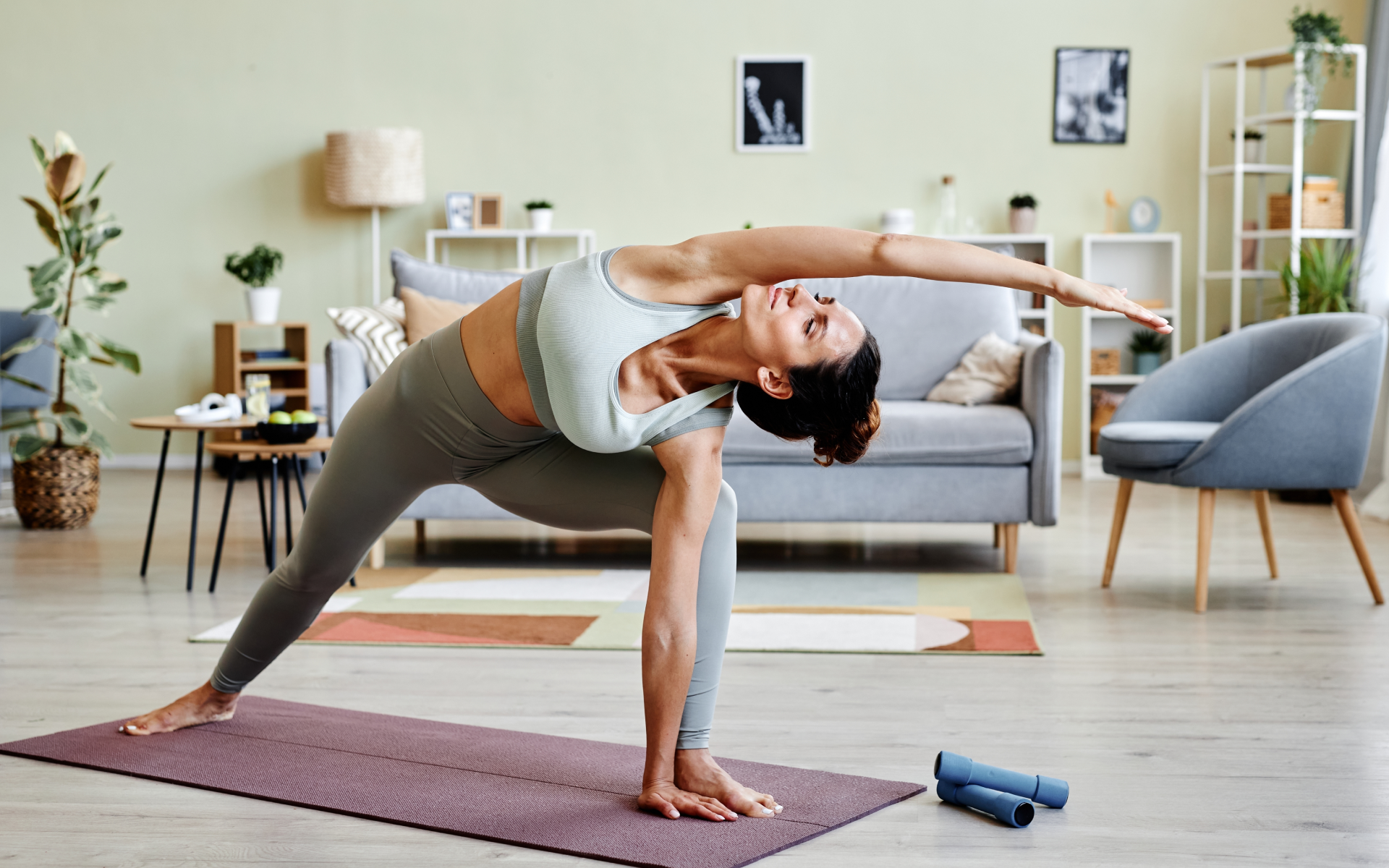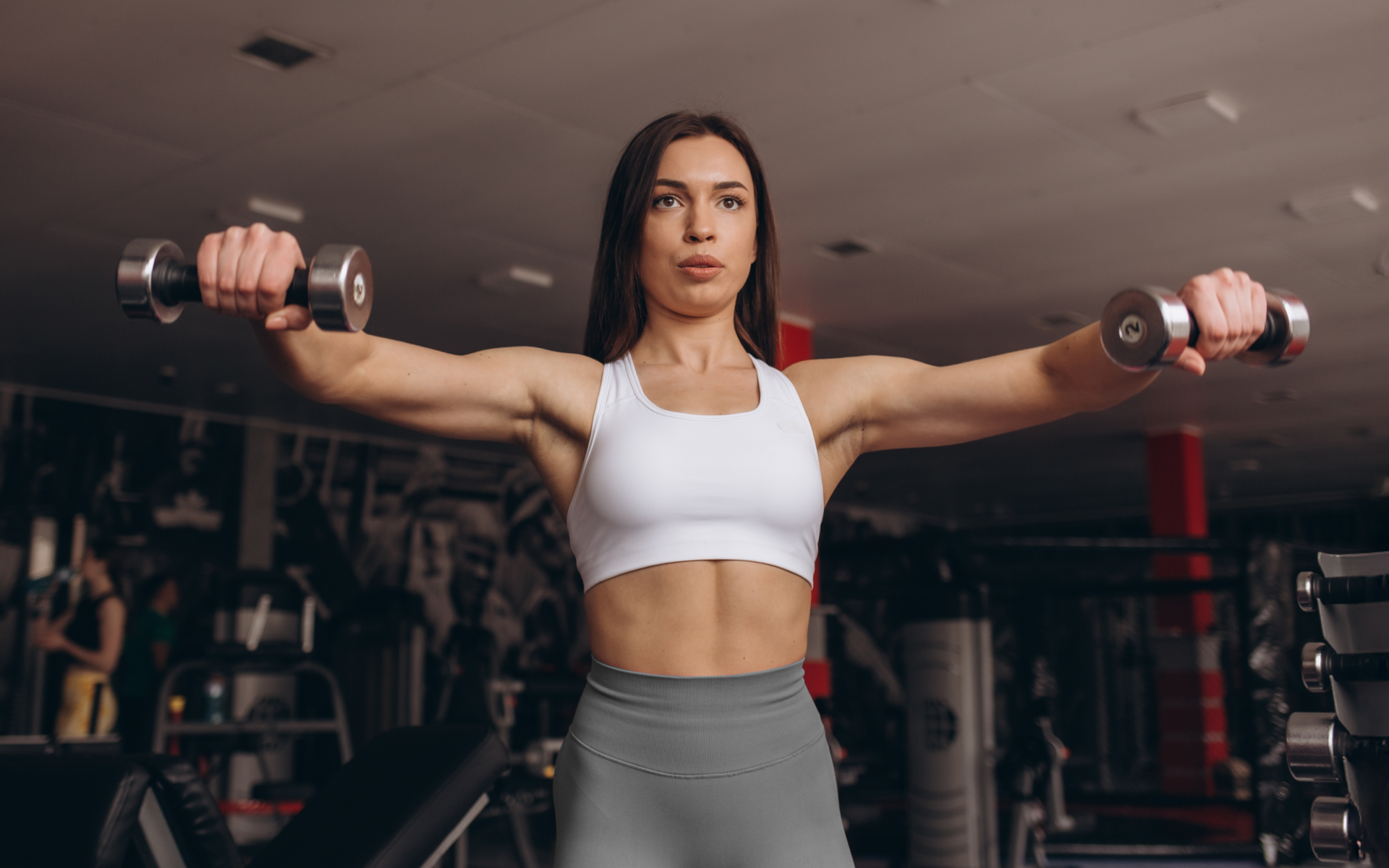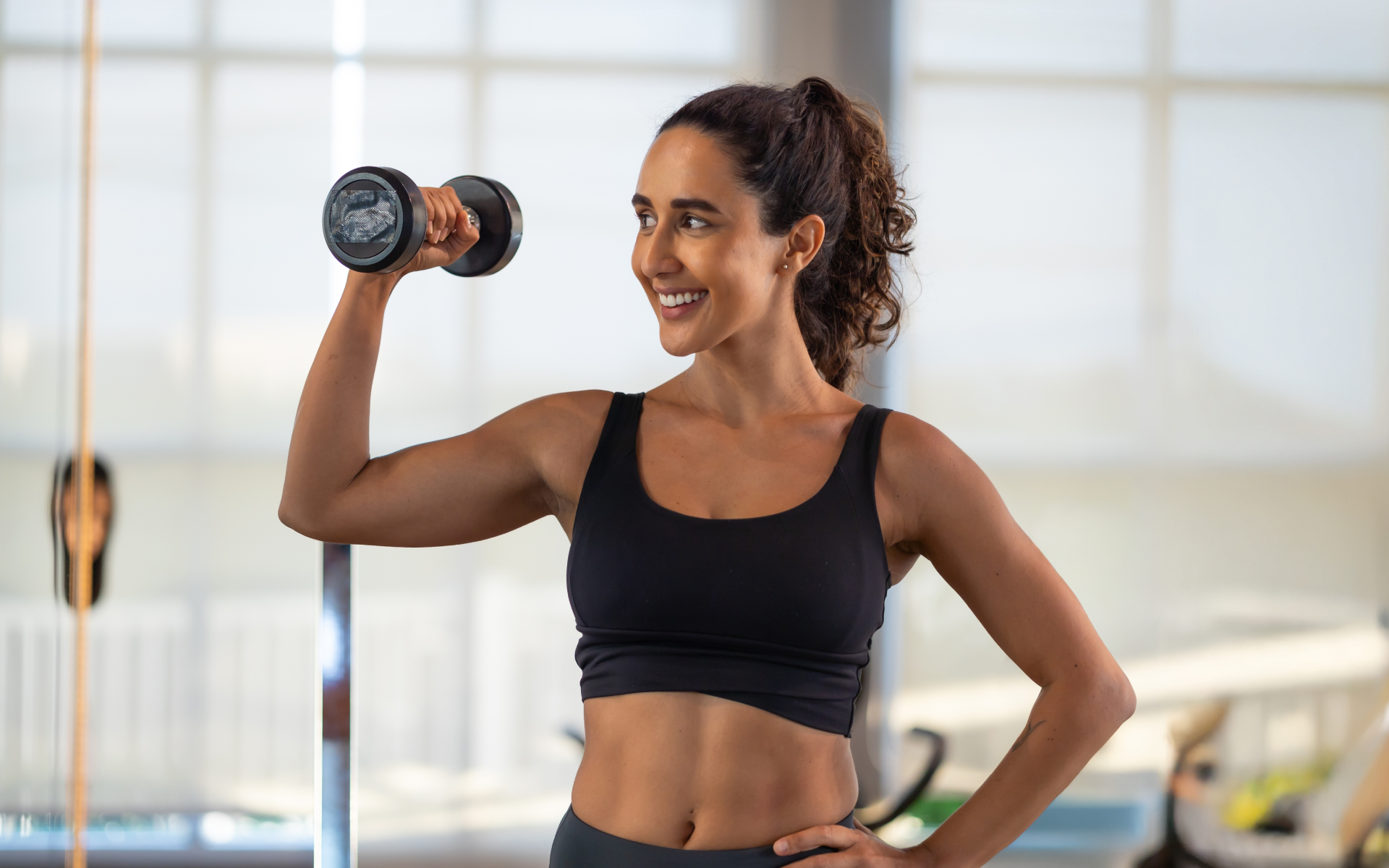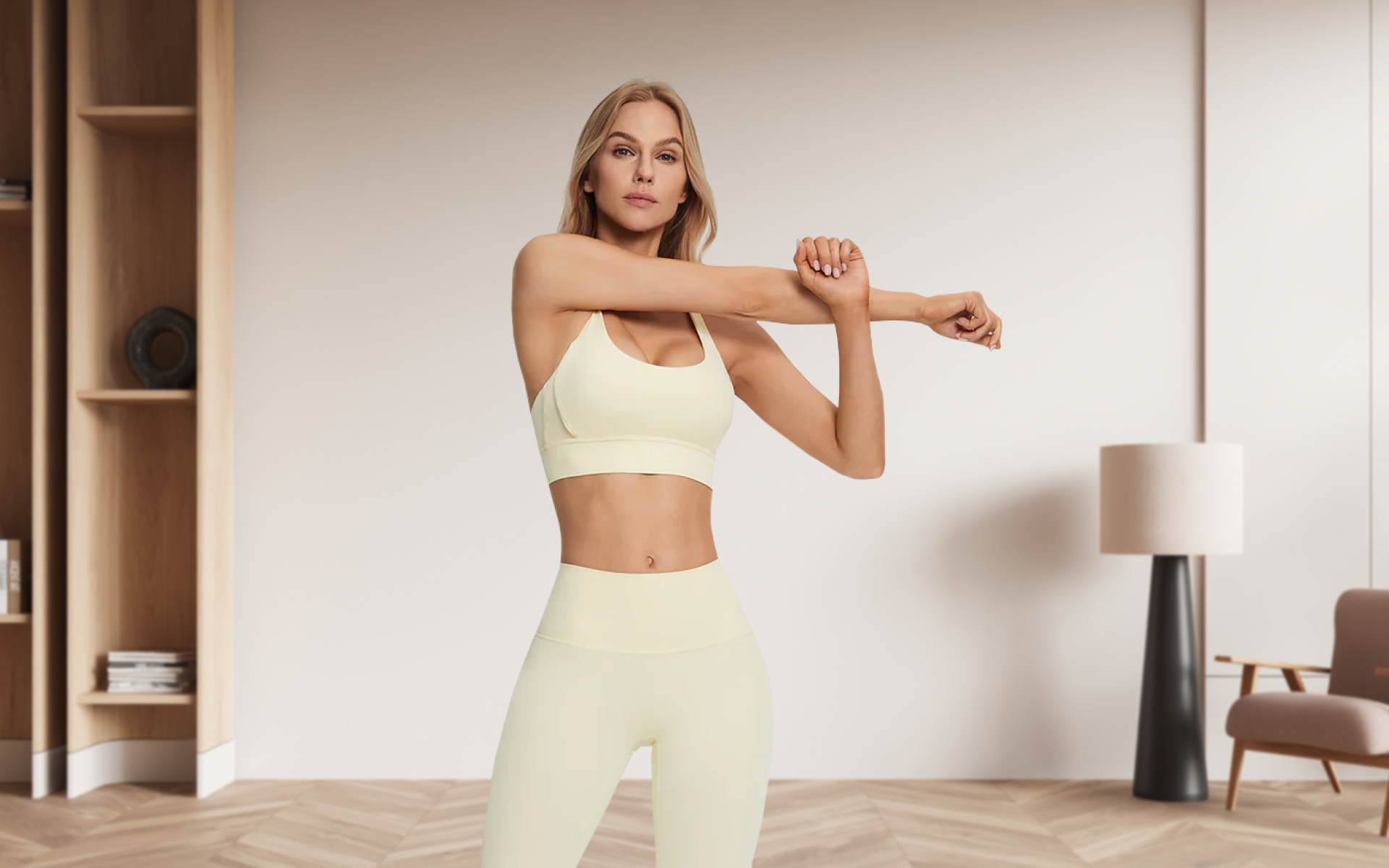When we think about fitness, it’s easy to picture specific “types” of bodies: the lean, elongated frame of someone who practices Pilates versus the muscular, well-defined physique of a weightlifter. But where do these distinctions come from? Are they truly a result of these forms of exercise or do other factors shape our perceptions?
And when it comes to deciding which is “better”, how do we even start to approach that question?
Which Is Better, Pilates Body vs Weightlifting Body?
It’s true that Pilates and weightlifting produce different types of physical adaptations.
Pilates enhances the endurance of smaller, stabilizing muscles, shaping a balanced and symmetrical body that moves fluidly (1). Weightlifting thrives on hypertrophy (muscle growth) and strength, often creating more visibly amplified muscles (2).
However, these outcomes aren’t just about the exercises alone – they’re influenced by a variety of factors:
- Genetics shape how we respond to activity (3). Some people naturally build muscle more easily, while others may have a leaner frame regardless of their workout routine.
- Diet plays a crucial role. A high-protein, calorie-surplus diet supports muscle growth (common in weightlifters) (4), while a calorie-balanced or deficit diet may be adopted by Pilates practitioners who are aiming for a leaner look.
- Lifestyle and Intent matter too. People who choose Pilates may already have goals that are aligned with a lean, toned aesthetic, while those who lift weights may prioritize strength and muscle growth. This self-selection bias can influence the “typical” body types that are associated with each practice.
- Training Intensity and Frequency: The way someone practices Pilates or weightlifting matters. For example, a weightlifter who goes on a “cut” where they’re on a high-protein, low-calorie diet may acquire the lean, yet muscular look that is commonly associated with Pilates.
- Social Influences: Media and societal norms influence how we perceive “Pilates bodies” and “weightlifting bodies”. These stereotypes may not always reflect reality but rather, the way these practices are marketed.
So, while there are physiological reasons for the differences, it’s not purely cause-and-effect. Many factors – both internal and external – contribute to the body types we associate with Pilates and weightlifting. It’s a fascinating interplay of biology, behavior, and culture. Our previous post goes into great detail about the Pilates strength training.
To challenge these narratives, imagine a weightlifter who prioritizes mobility or a Pilates pro who uses resistance training to build strength. The body types start to blur. What we may think of as a “typical” Pilates or weightlifting body is more flexible than we often realize.
Read more: The Ultimate Mat Pilates Exercises Guide for Beginners
Which Is Better?
There’s no universal “better.” It all boils down to your goals.
If you want to feel more connected, improve flexibility, and move with greater ease, Pilates may offer exactly what you need. If building strength, boosting your metabolism, and lifting heavier objects appeal to you, weightlifting could be your perfect fit.
Pilates Could Be for You If:
- You’re recovering from an injury or looking to build long-term stability.
- Your priorities are flexibility, mobility, and core strength.
- You want to feel fluid, graceful, and aligned in your movements.
BetterMe: Health Coaching app helps you achieve your body goals with ease and efficiency by helping to choose proper meal plans and effective workouts. Start using our app and you will see good results in a short time.
Weightlifting Could Be for You If:
- You’re looking to increase absolute strength and muscle definition.
- Bone health and metabolism boosts are high on your list.
- You love the empowerment of lifting heavy and challenging your limits.
However, perhaps the most exciting idea is that you don’t have to pick one. A blend of both may put you on a path to creating a strong, balanced, and functional body.
Will Pilates Give Me a Model Body?
When people think of a model body, they often picture tall, lean frames with well-proportioned muscles, excellent posture, and a kind of “effortless chic”. But here’s the truth: there’s no universal “model body”. What we see in magazines or on runways is a narrow aesthetic that is influenced by the fashion industry, genetics, and sometimes significant lifestyle choices.
The idea of a “model body” being one-size-fits-all is flawed because every body is unique. Beauty and health come in many forms, and instead of chasing an external ideal, perhaps the focus should be on what makes you feel strong, functional, and aligned.
That being said, exercise can improve the way your body looks and feels.
Pilates is often centered around controlled, low-impact movement. It’s about precision, breathing, and activating smaller, stabilizing muscles that often get overlooked in traditional strength training.
- Muscle Fibers: Pilates primarily targets Type I muscle fibers, also known as slow-twitch fibers. These are endurance-oriented and work to support posture and stabilize joints (5). They’re why consistent Pilates enthusiasts often build a lean, “non-bulky” appearance.
- Core Stability: The core is the foundation of Pilates. Almost every movement is designed to engage the deep abdominal muscles (such as the transversus abdominis) together with the pelvic floor and back muscles (6). Over time, this builds a strong “corset” of support around your spine.
- Flexibility and Functional Movement: Pilates focuses heavily on lengthening muscles and improving flexibility (1). Movements flow through a full range of motion, which promotes joint health and suppleness. This may explain the “elongated” aesthetic that is often associated with the practice.
- Posture and Alignment: As Pilates emphasizes body control and spinal alignment, it can correct imbalances that are caused by poor posture (7). This practice often creates a lithe, upright build that looks intentional and balanced.
What Type of Body Does Weightlifting Build?
Weightlifting doesn’t pigeonhole you into one type of body. Instead, it aligns with your goals. Do you want to be strong and compact? Lift heavy and eat accordingly.
Do you want lean muscle for a toned appearance? Follow a hypertrophy program with a calorie-conscious diet. Do you want to simply move better and prevent injury? Add functional strength movements to your routine. If you’re curious about Pilates vs strength training, check out our earlier article.
The program you choose results in a specific outcome. To a certain extent, all weightlifting programs focus on:
- Muscle Fibers: Weightlifting mainly activates Type II muscle fibers, or fast-twitch fibers. These fibers are responsible for generating forceful and powerful movements but fatigue quicker than their Type I counterparts (8). The regular engagement of these fibers leads to hypertrophy (muscle growth), which explains the “thicker” musculature of weightlifters (8).
- Hypertrophy and Strength: Progressive overload is the hallmark of weightlifting. By gradually lifting heavier weights, the body adapts by increasing muscle size and strength (9). Hypertrophy is why weightlifters often display bulkier arms, shoulders, and quads.
- Bone Density: One often overlooked benefit is improved bone density. Weightlifting places stress on the skeleton, prompting bones to increase density and strength. This is essential for reducing the risk of osteoporosis later in life (10).
- Postural Strength: Weightlifting also contributes to good posture, but in a different way. By strengthening the lats, traps, glutes, and other large muscles of the posterior chain, it supports spinal alignment and protects against sedentary lifestyle habits (11).
Can I Replace Weightlifting with Pilates?
The idea of replacing weightlifting with Pilates is a common question for those who are looking for a blend of strength, mobility, and aesthetics. While both exercises can build strength and improve body composition, they achieve these goals through different mechanisms.
Weightlifting primarily focuses on progressive overload, a process that forces your muscles to adapt by lifting heavier weights over time. This builds muscle hypertrophy (growth in muscle size) and maximal strength, which comes from stronger and denser muscle fibers (9). Hypertrophy and strength gains are amplified when weightlifting targets large muscle groups such as the chest, legs, and back.
At the same time, Pilates emphasizes core strength, stability, and mobility (12). Movements are often body-weight-based or utilize light resistance from equipment like Pilates rings or reformer machines. Pilates activates Type I muscle fibers, which are your endurance muscles, and works well for improving posture, balance, and functional strength (5). Dive deeper into the pilates body changes with our dedicated article.
Here’s the key difference: Pilates enhances muscle tone and flexibility but doesn’t provide the mechanical tension necessary for significant hypertrophy or maximal strength.
For those who are looking to achieve specific goals such as increasing bone density, metabolic rate, or building a visibly muscular physique, Pilates may not fully replace weightlifting. However, if your goals include improving functional movement, reducing joint strain, or rehabilitating from injury, Pilates could serve as an effective replacement or complement.
Your choice to replace weightlifting with Pilates should depend on your fitness goals. Think of Pilates not as a substitute for heavy strength training but as a valuable adjunct to improve coordination and bodily awareness.
Can I Lift Weights and Do Pilates on the Same Day?
Absolutely, but your approach matters. Combining Pilates and weightlifting can be highly complementary and even beneficial for certain fitness goals. However, how and when you should combine them depends on intensity, scheduling, and your recovery capacity.
Consider the Order and Intensity
If strength and muscle growth are your main priorities, start with weightlifting. Weightlifting demands significant energy, and you’ll want to approach it at full intensity. Follow it with a Pilates session to decompress and focus on flexibility and core engagement.
On the other hand, if your primary goal is to improve mobility or if you’re rehabilitating from an injury, starting with a lighter Pilates session can help with tissue warming before you transition into weightlifting.
BetterMe will shake off your mental funk, rid you of your energy-zapping habits, and help you sculpt the body of your dreams. Intrigued? Hurry up and change your life for the better!
Factors to Watch
- Recovery Between Workouts – When done with focus, both disciplines challenge your body. Combining them on the same day without adequate recovery can lead to fatigue or compromised performance in one of the sessions.
- Adapt Training Volume – Adjust the volume of your workouts to avoid burnout. Pair a moderate lifting session with a light Pilates flow rather than two high-intensity workouts back-to-back.
- Pay Attention to Joint Fatigue – Heavy lifting taxes your joints, while Pilates often involves repetitive joint-centric movements. Monitor how your body responds and skip excessive overlap.
It’s worth noting that some professional athletes and fitness enthusiasts use this pairing strategically. Weightlifting builds raw strength, while Pilates refines movement mechanics and prevents stiffness. Together, these methods allow for a well-rounded, resilient body.
Can You Get a Toned Body with Just Pilates?
Yes, but with important caveats. Pilates is effective for improving muscle tone, posture, and overall mobility. If by a “toned body”, you mean a firmer appearance and enhanced definition, a regular Pilates practice can deliver impressive results, particularly for the core, glutes, and shoulders.
However, the word “toned” can sometimes be misleading. To clarify, what most people consider “toning” involves increasing muscle definition and reducing body fat.
Here’s what Pilates does well:
- Strengthens and tightens muscles, particularly smaller, stabilizing muscles.
- Promotes functional strength and muscle endurance without significant bulk.
- Enhances posture, giving the “lifted” look that is associated with Pilates bodies.
Where Pilates may fall short is in the caloric burn and metabolic shifts that are required to lose significant fat stores. Pilates alone may not meet the intensity of high-cardio modalities or the metabolic impact of weight training. For those who are looking to get toned solely from Pilates, it’s essential to pair it with a caloric deficit (burning more calories than consumed) to reveal muscle definition.
The short answer is yes, but if greater fat loss or visible muscularity is your end goal, you may need supplementary forms of exercise or to pay close attention to your diet.
Read more: A Complete Guide To Pilates Mat Exercises For All Fitness Levels
Can You Build Muscle with Just Pilates?
This is a nuanced question. While Pilates promotes strength and muscle engagement, it’s not as effective as weightlifting for building muscle mass. Muscle growth occurs when muscles are subjected to repeated overload (e.g. progressively lifting heavier weights).
Pilates typically works within a range of light resistance and body-weight exercises, which challenge endurance but don’t impose the same degree of tension necessary for hypertrophy.
How Pilates Builds Functional Muscle
What Pilates excels at is targeting deep muscles in areas such as the core, spine, and hips (13). These muscles are responsible for stability and controlling movement. Over time, you’ll notice improvements in muscle tone and the way your muscles “support” your overall build.
Exercises such as the Pilates plank or leg kick are fantastic for developing strength in stabilizers, which weightlifting may sometimes overlook.
Where Pilates Falls Short for Muscle Mass
- Without heavy resistance, it’s challenging to stimulate significant Type II muscle fiber growth, which drives muscle hypertrophy.
- If you’re aiming for larger muscle size or explosive power, Pilates alone won’t deliver those results. Weightlifting or resistance-based strength training is necessary.
Pilates can contribute significantly to overall fitness by improving core strength, flexibility, posture, and muscular endurance. However, it may not provide the cardiovascular intensity or muscle hypertrophy that are associated with other exercise forms such as running or weightlifting. To achieve comprehensive fitness, combining Pilates with aerobic activity and strength training is ideal. Yes, Pilates can help strengthen and tone the glutes through focused movements such as bridges, leg lifts, and side-lying exercises. These activate smaller stabilizing muscles and improve shape and endurance. However, for significant glute muscle growth, incorporating heavy resistance exercises such as squats or deadlifts is more effective. That depends on your goals. Pilates enhances posture, flexibility, and balance while creating a lean, toned appearance. Weight training is more effective for building muscle mass, increasing strength, and altering overall body composition. Both can contribute to a well-rounded physique, but the choice should be aligned with your personal goals. If you’re not losing weight with Pilates, this could be due to factors such as caloric intake, workout intensity, or frequency. Pilates burns fewer calories than high-intensity activities or weightlifting. For weight loss, combining Pilates with a calorie-controlled diet and other forms of exercise, such as cardio, can be more effective.Frequently Asked Questions
Is Pilates enough to get fit?
Can Pilates build glutes?
Is Pilates better than weight training for physique?
Why am I not losing weight with Pilates?
The Bottom Line
Pilates is focused on core strength, posture, flexibility, and controlled movement, which is ideal for those who are looking for a lean, balanced physique. On the other hand, weightlifting builds muscle mass, increases strength, and boosts metabolic rate, which makes it a go-to for those who are aiming for visible muscle growth and improved bone density.
Whether you prioritize functional strength or physical power, the best choice is dependent on your goals and preferences. A combination of both may provide a well-rounded approach to overall health and fitness.
DISCLAIMER:
This article is intended for general informational purposes only and does not serve to address individual circumstances. It is not a substitute for professional advice or help and should not be relied on for making any kind of decision-making. Any action taken as a direct or indirect result of the information in this article is entirely at your own risk and is your sole responsibility.
BetterMe, its content staff, and its medical advisors accept no responsibility for inaccuracies, errors, misstatements, inconsistencies, or omissions and specifically disclaim any liability, loss or risk, personal, professional or otherwise, which may be incurred as a consequence, directly or indirectly, of the use and/or application of any content.
You should always seek the advice of your physician or other qualified health provider with any questions you may have regarding a medical condition or your specific situation. Never disregard professional medical advice or delay seeking it because of BetterMe content. If you suspect or think you may have a medical emergency, call your doctor.
SOURCES:
- Pilates for Improvement of Muscle Endurance, Flexibility, Balance, and Posture (2010, journals.lww.com)
- Resistance Training Load Effects on Muscle Hypertrophy and Strength Gain: Systematic Review and Network Meta-analysis (2021, pubmed.ncbi.nlm.nih.gov)
- Genomics and Genetics in the Biology of Adaptation to Exercise (2014, pmc.ncbi.nlm.nih.gov)
- Dietary Protein and Muscle Mass: Translating Science to Application and Health Benefit (2019, mdpi.com)
- Muscle Fiber Type Transitions with Exercise Training: Shifting Perspectives (2021, mdpi.com)
- The Relationship of Trunk Muscle Activation and Core Stability: A Biomechanical Analysis of Pilates-Based Stabilization Exercise (2021, mdpi.com)
- Effects of Pilates exercises on spine deformities and posture: a systematic review (2024, bmcsportsscimedrehabil.biomedcentral.com)
- Extraordinary fast-twitch fiber abundance in elite weightlifters (2019, pmc.ncbi.nlm.nih.gov)
- Effects of Resistance Training Overload Progression Protocols on Strength and Muscle Mass (2024, pubmed.ncbi.nlm.nih.gov)
- Effects of Resistance Exercise on Bone Health (2018, pmc.ncbi.nlm.nih.gov)
- Effects of a Resistance and Stretching Training Program on Forward Head and Protracted Shoulder Posture in Adolescents (2016, researchgate.net)
- Pilates – health benefits (2022, betterhealth.vic.gov.au)
- Comparison of deep and superficial abdominal muscle activity between experienced Pilates and resistance exercise instructors and controls during stabilization exercise (2015, pubmed.ncbi.nlm.nih.gov)

